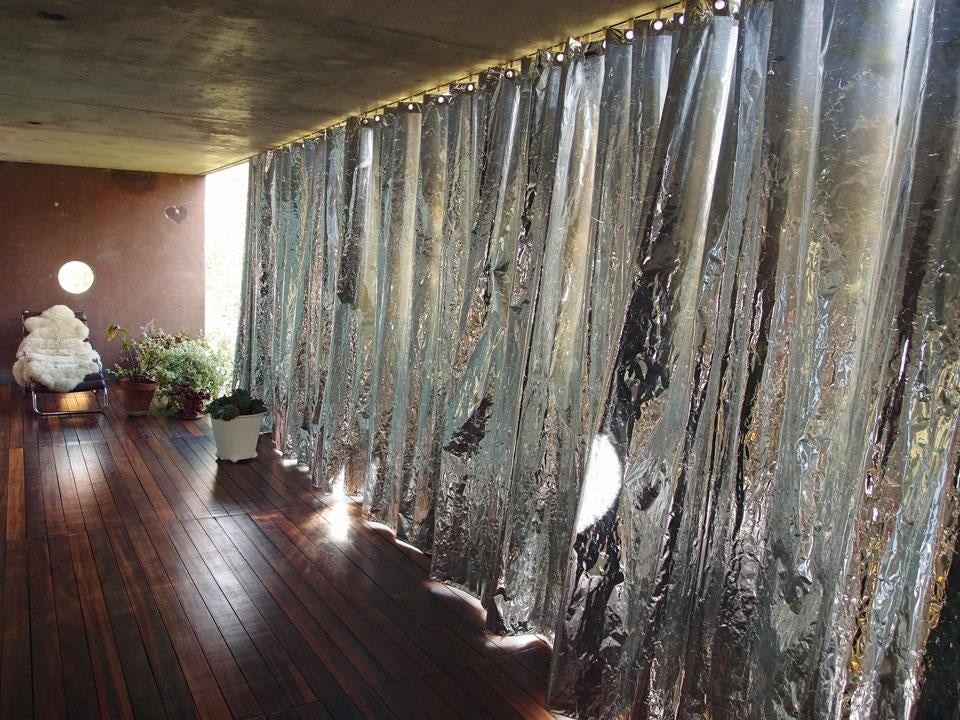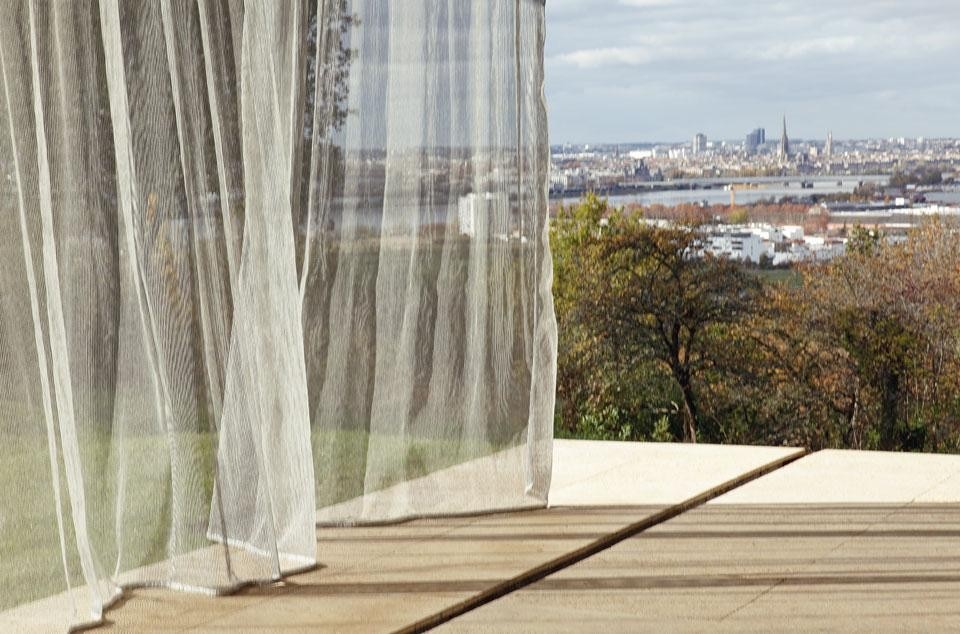1 In the 1990s, Rem Koolhaas designed a house near Bordeaux for the Lemoîne publishing dynasty. The 500-square-metre building, completed in 1998, counts among the most important contemporary buildings. Its exaggerated use of technology — a huge platform hovering vertically through the different storeys of the building — responded directly to a personal tragedy: the family had already begun design discussions with several architects when the client was involved in a serious car crash, leaving him paralysed from the waist down. The building had to be adapted to the needs of a wheelchair user.
2 While some architects attempted to avoid the problem through a strict, horizontal arrangement of rooms, Koolhaas chose to highlight and even intensify the problem; he made it the central aesthetic gesture of his design solution. Through the building's three storeys, an expansive platform would rise as a "room" with a vertically mobile floor. Floating past cupboards, wine racks and bookshelves, the (now deceased) client enjoyed better access to high shelves and surfaces than a non-disabled person would in a normal interior context. This effortless relationship with verticality, usually beyond reach for wheelchair users, was spectacular. Koolhaas turned disaster into triumph: the floor glides and floats between levels as if by magic.
3 The idea of literally moving the most fundamental of all construction elements — the floor—should be kept in mind when trying to understand how the artist Petra Blaisse, emphasising the inherent imagery of the building, its imagination d'une vie, radicalises the idea of dissolving boundaries and mobilising formerly static elements in her design interventions in the house.
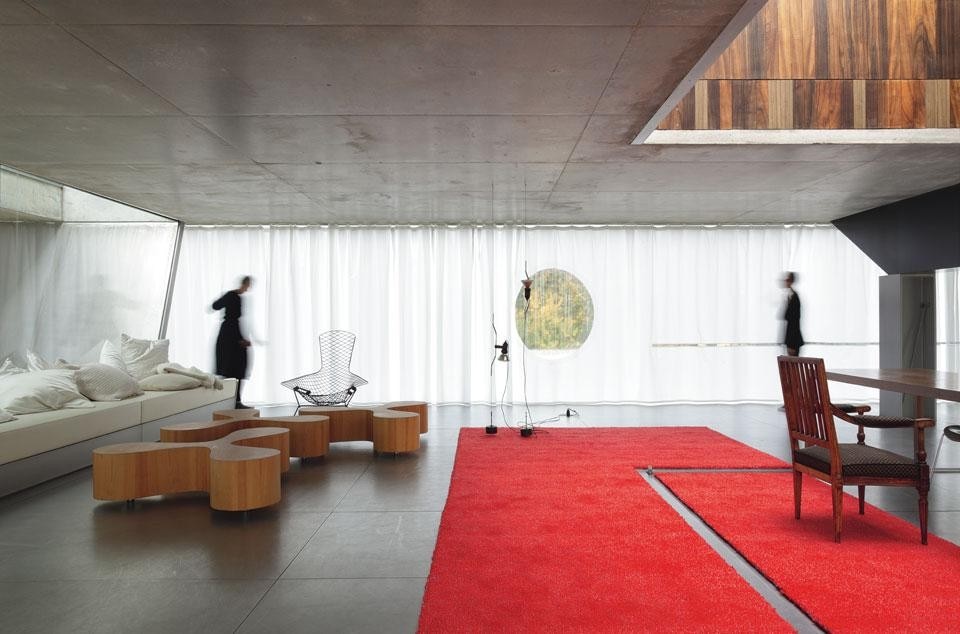
5 In the central, lightest and almost entirely glazed structure, Petra Blaisse adds white, lightweight curtains and a grey, net-like membrane. They do not merely form a filter in front of the glass, but can also be drawn outside to encircle the spacious terrace, where the massive concrete slab overhead balances heavily on a mirror-clad column. The effect is amazing: a room comes into being, its textile walls constantly changing shape in the wind. The walls swell and curve, blowing close to those who sit around. Under its rock-like, concrete ceiling, the house performs an improbably light "dance of the curtain walls" that seems to defy statics: the heaviest component appears to rest on the lightest, melting into thin air the notionally unalterable laws of statics that once tormented the disabled inhabitant.
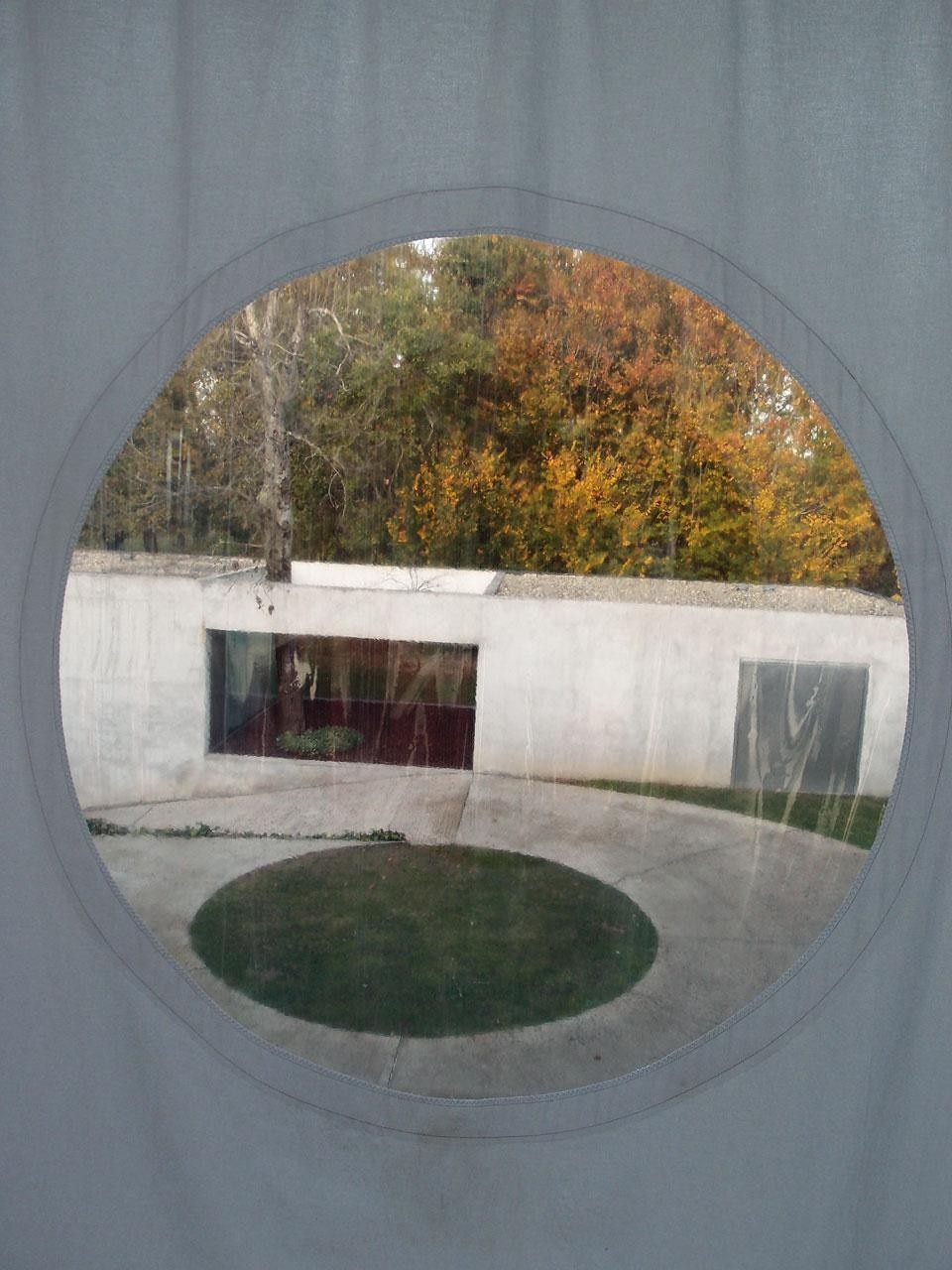
In another room, square reinforcements carried by the light gauze of the curtain come to a halt in front of the concrete wall's portholes. When closed, the square patches appear as back-lit abstract sculptures. The curtain, formerly a twodimensional layer, gains depth; the former plane of the curtain wall deepens into a space.
7 Just as an architect uses a pencil to sketch a floor plan, one can create an ephemeral room by drawing a very long, light curtain along the ceiling, through the open space of the loggia. In this large expanse in the Bordeaux villa, exterior space can be turned into an interior room with one simple, easy gesture that changes, in an act of delicate spatiophagie, outside to inside, like the shoreline and the sea — a phenomenon reflected in the name of Petra Blaisse's studio, Inside Outside. This room is temporary, like a tent, constructed with quiet gestures. It is an inside space from which the outside is visually excluded, but in which wind, moisture, heat and cold can be felt. The outside is still present and, while screened from sight, highlighted even more as a sensual experience. Again, Petra Blaisse's work echoes and alters an idea of permeability inherent in Rem Koolhaas's architecture for a disabled inhabitant.
Anyone who enters becomes the object of a mysterious act, where spatial drifts allow new encounters
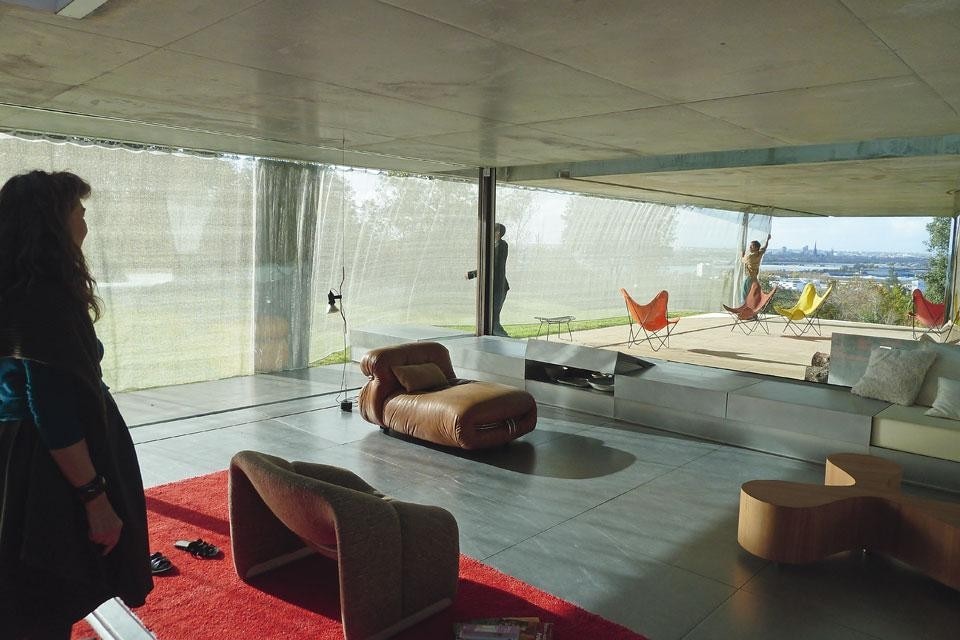
9 In the former children's bedrooms, however, the curtains are made of a shiny, slightly reflective light-blue material, reminiscent of oilskin or 1970s children's toys. The materiality is unusual for an interior space: it brings to mind the deformed surfaces of a glossy object, or a car. The curtain reflects its surroundings, mirroring them slightly. At times functioning as a wall, the curtain suddenly takes on the qualities of a mirror as a space-dissolving and space-unfolding object. A slit appears in the cloth; the curtains seem to float in space, with the same improbable fragility as the house hovering above the ground. Light hits the floor below the hem, drawing a meandering line. The boundary between interior and exterior is loose, open, wandering, not clearly delineated.
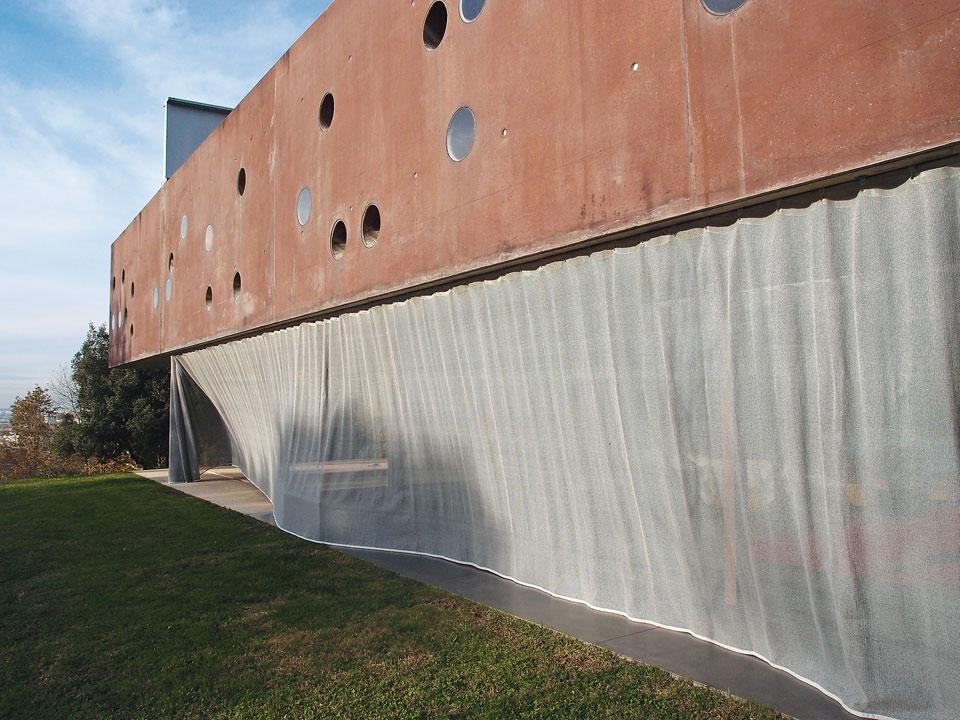
11 It is hard to discern from what material the curtains in Bordeaux are made. As Paul Valéry once said, they are "matière à doutes": pulled flat behind a glass pane, with its circular window, the white curtain resembles a paper wall.
12 One floor up, the fabrics create mirror effects, the building metabolising with shimmering reflections and wafting walls. Translucent textiles shroud the mirror-surfaced column, which dissolves in reflections and drapery — just as the bedroom's thermofoil-like curtain reflects the exterior as well as the interior of the room.
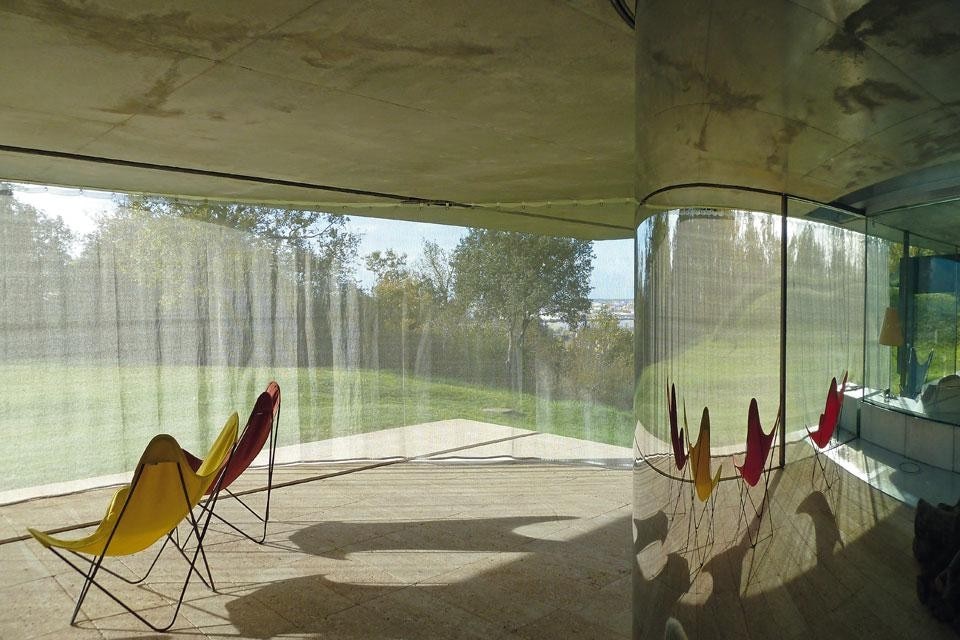
The phenomenon of the barrier-free barrier is known from Northern African countries: towards the street (which, in the souk, is often covered with fabric to protect the space from the sun, already forming a kind of interior space), goods such as rugs or clothing are hung in tight rows; behind them, a storage space gives access through a curtain to more private spaces like the kitchen, where family members sit together. The transition between the private and public zone is extremely fluid. There is rarely a door, instead a thicket of curtains and stacks; nevertheless, no stranger would dare to intrude on these private areas, simply because he or she would get lost in this forest of objects and labyrinthine layers.
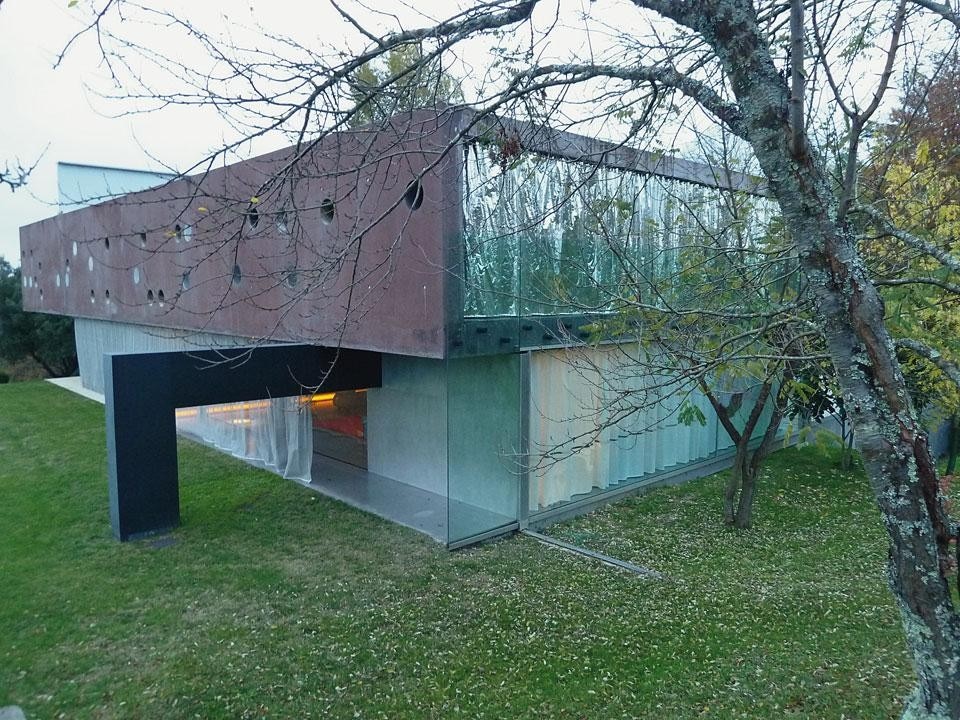
15 Bizarre as Semper's anthropomorphic architectural history may seem today, it did enable the mental model that a facade could be light, temporary and removable, an ephemeral form of clothing. Petra Blaisse's ongoing process of reclothing the Bordeaux house seems to play with this figure of thought. Wafting in and out, the curtains and the porous, rust-brown concrete wall are the image of a social ideal: the building is not an exclusive bunker but a filter through which the world pervades the home. The building is a social machine; the curtain wall is the curtain of a stage, of a space that stages a new kind of social relationship.
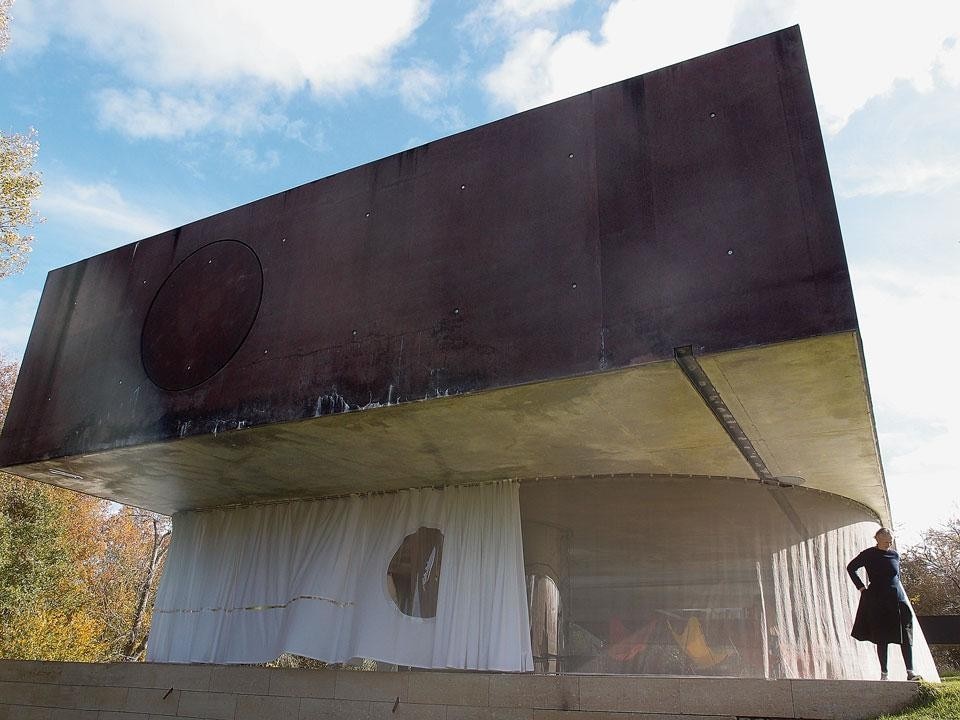
Blaisse's studio spent three months drawing traces in the room, dividing and forming groups. This was not merely an inhabitable sculpture; it was a model for treating empty, dysfunctional spaces, in which light, ephemeral interventions — curtains or cloth panels — enable new collective experiences. Like every good building, the installation achieved something outside the normative framework in which space is thought, designed and described.
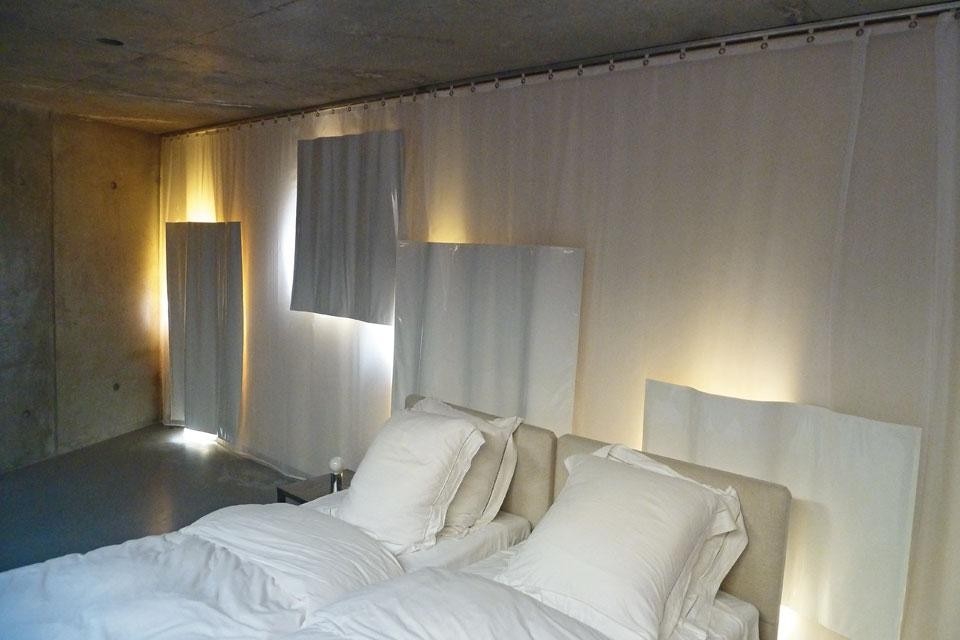
18 Almost all public activities are framed by acts of buying and selling: pedestrian zones, shopping streets and public space are created by amassing shops, cafe tables and cinemas. These facilities prefigure activity in public space as a sequence of consumer actions executed in a passive, seated position: one buys a pair of shoes, tries on a pullover, orders a coffee or takes a seat in the cinema.
19 Petra Blaisse's pavilion creates a counterexperience. It is a space without letters, without messages, without preset activities. There is nothing to buy, just a space of collective détour and deviation, a stage inviting one to evade and linger, look, talk and intersect with strangers. Maybe this could be the raw material for a new narrative of public life. Niklas Maak, Berlin-based writer and art critic of Frankfurter Allgemeine Zeitung
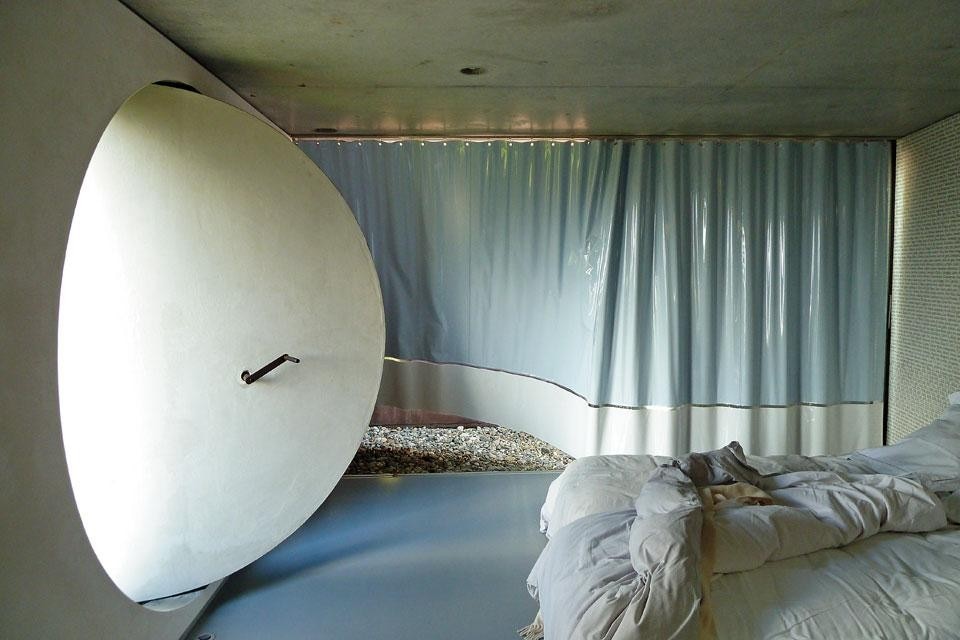
Design Architects: Inside Outside/Petra Blaisse
Design Team: Petra Blaisse, Peter Niessen with Barbara Pais, Francesca Sartori
Curtain Manufacturer: Gerriets GmbH; Atelier de Babou — Isabelle Hautefeuille and Anne Vergeron Carpet Manufacturer: Lifestyle Carpets
Materials: Indian Douppion silk and Habutai silk (guesthouse and caretaker's house); Antung-Honan silk (bathroom and master bedroom); PVC (balcony); high-gloss film (PVC), clear glass film (PVC), faux leather (PVC), black-out fabric (PC, PL, CO) (children's bedrooms); cotton + clear glass film (living room); synthetic mesh (polyethylene) (outdoor terrace)
Completion: 11/2012
